What is the guided brainstorming?
Guided brainstorming is a structured approach to generating ideas or solutions to a problem. It involves providing participants with specific guidelines or prompts to help focus their thinking and encourage creative thinking. This can be done through the use of brainstorming techniques such as mind mapping, idea mapping, or using specific questions or prompts to stimulate ideas. The goal of a guided brainstorming is to facilitate the generation of a wide range of ideas and perspectives, and to foster collaboration and innovation within a group.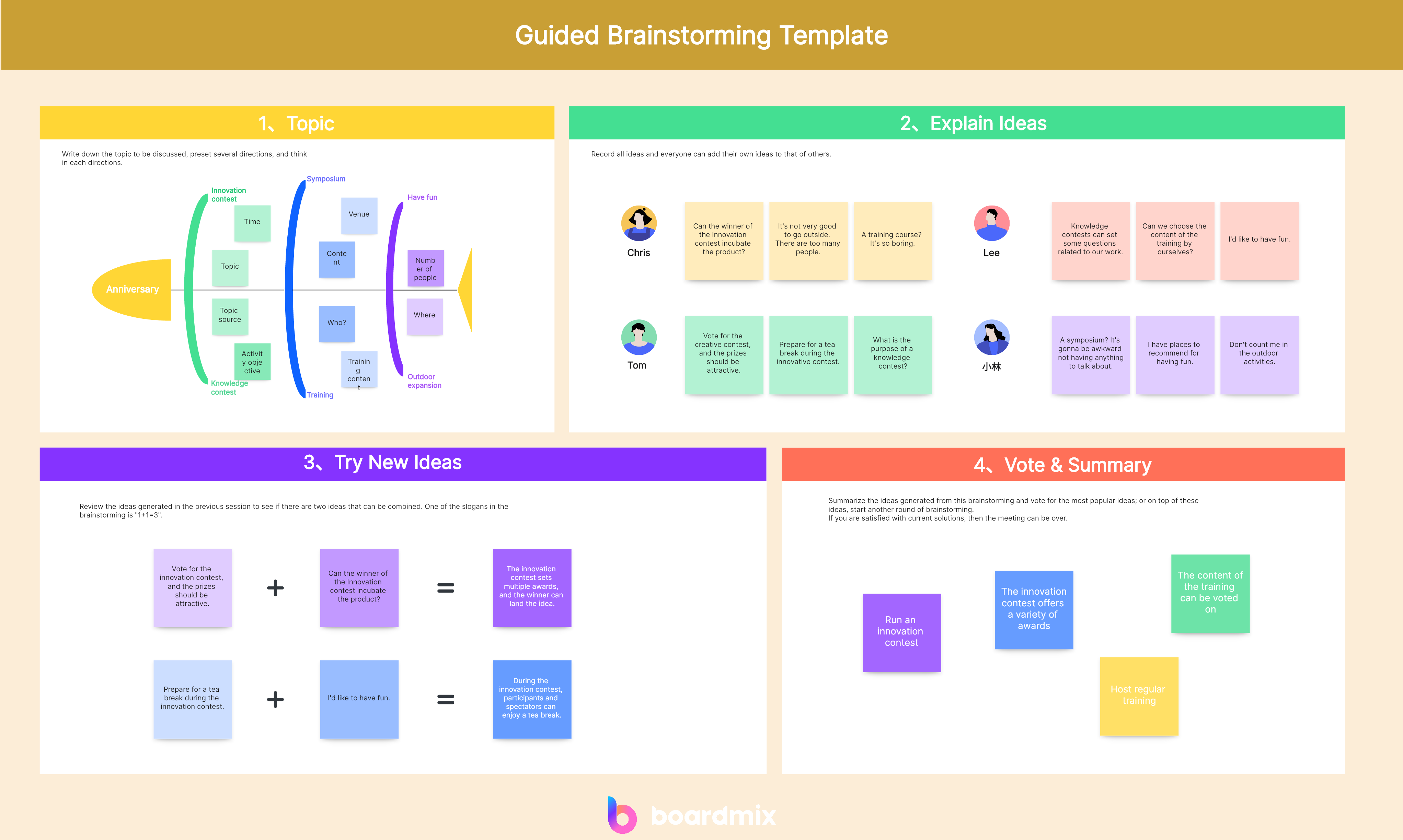
Learn Guided Brainstorming Examples in Action
Guided brainstorming is a valuable technique for generating ideas and solutions in a structured and collaborative manner. Let me provide you with some examples of how guided brainstorming can be applied in different scenarios.
- Problem-solving: Suppose you are facing a specific challenge or problem at work. In a guided brainstorming session, participants can be given prompts or questions related to the problem, such as "What are some possible solutions?" or "How can we overcome this obstacle?". This helps to focus the thinking and encourages creative problem-solving.
- Product development: When developing a new product or service, a guided brainstorming session can help generate innovative ideas. For example, participants can be guided to think about the target audience's needs and preferences and brainstorm ideas for features, design elements, or marketing strategies.
- Team building: Guided brainstorming can also be used to foster collaboration and teamwork within a group. For instance, team members can be prompted to brainstorm ideas for team activities, communication strategies, or ways to improve collaboration and productivity.
- Marketing campaigns: When planning a marketing campaign, a guided brainstorming session can generate ideas for messaging, advertising channels, target audience segmentation, and creative content. Participants can be guided to think about different aspects of the campaign and contribute their ideas.
- Strategic planning: Guided brainstorming is useful in strategic planning sessions where participants need to come up with ideas for the future direction of an organization. Questions such as "What are our strengths and weaknesses?" or "What opportunities and threats do we face?" can guide participants in generating ideas and insights.
In each of these examples, the role of a facilitator is crucial in guiding the brainstorming process, keeping the discussion focused, and encouraging active participation from all participants. The aim is to create an environment that stimulates creativity, encourages open communication, and ultimately leads to innovative and effective solutions.
Remember, guided brainstorming is a flexible technique that can be adapted to different contexts and goals. It is important to tailor the prompts and guidelines to suit the specific objectives of the session.
Obtain Guided Brainstorming Templates in Boardmix
Boardmix offers a variety of guided brainstorming templates that can help facilitate productive and engaging brainstorming sessions. Here is how you can make the most out of Boardmix's guided brainstorming templates.
1. Access Boardmix
Log in to your Boardmix account or create a new one if you don't have an account already.

2. Select a Template
Browse through the available templates in Boardmix and choose the one that suits your needs. There is a guided brainstorming template available in the template library, or you can select a general brainstorming template and customize it accordingly.
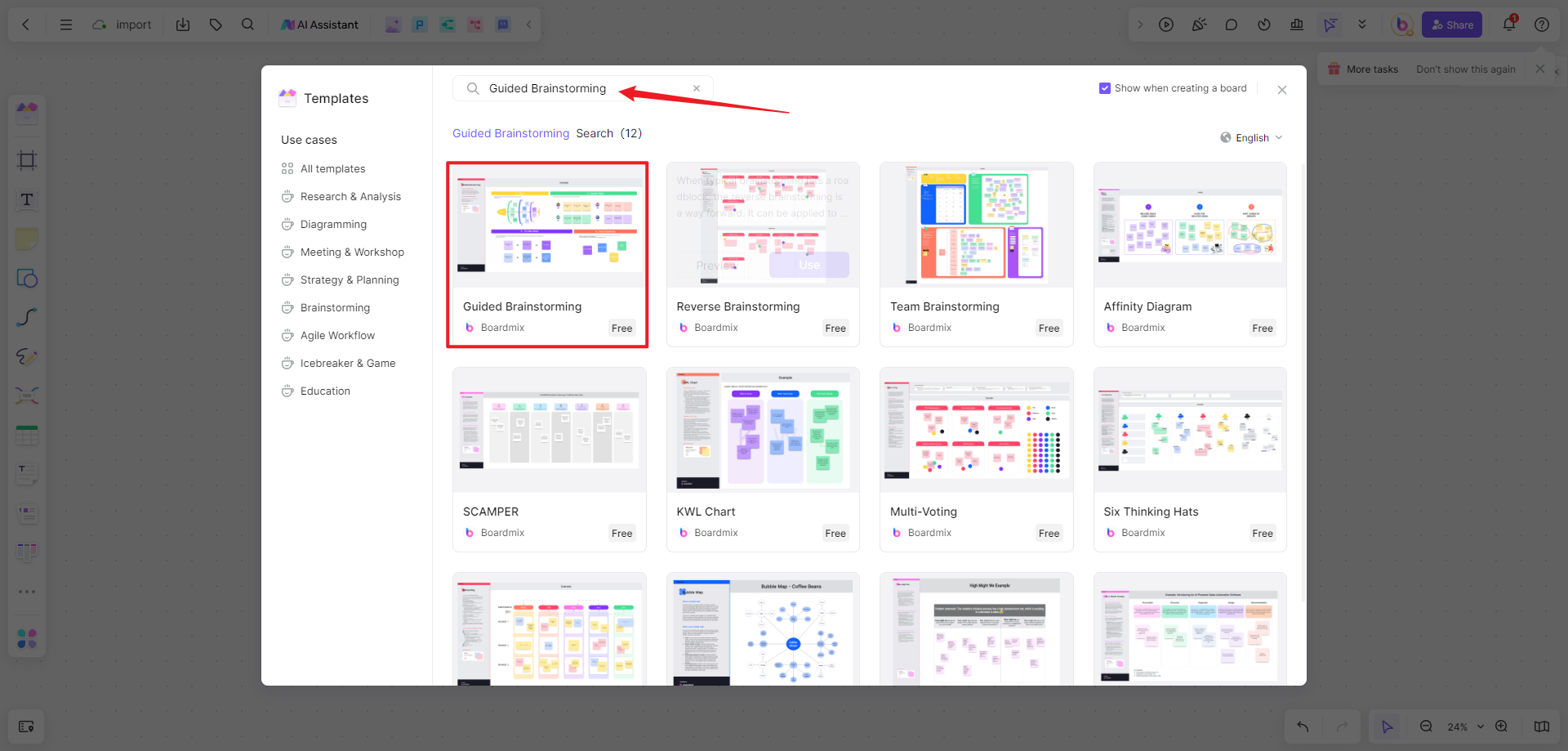
3. Customize the Template
Once you have selected a template, you can customize it according to your requirements. Add your own prompts, questions, or guidelines to the template to align with the specific problem or topic you want to brainstorm about.
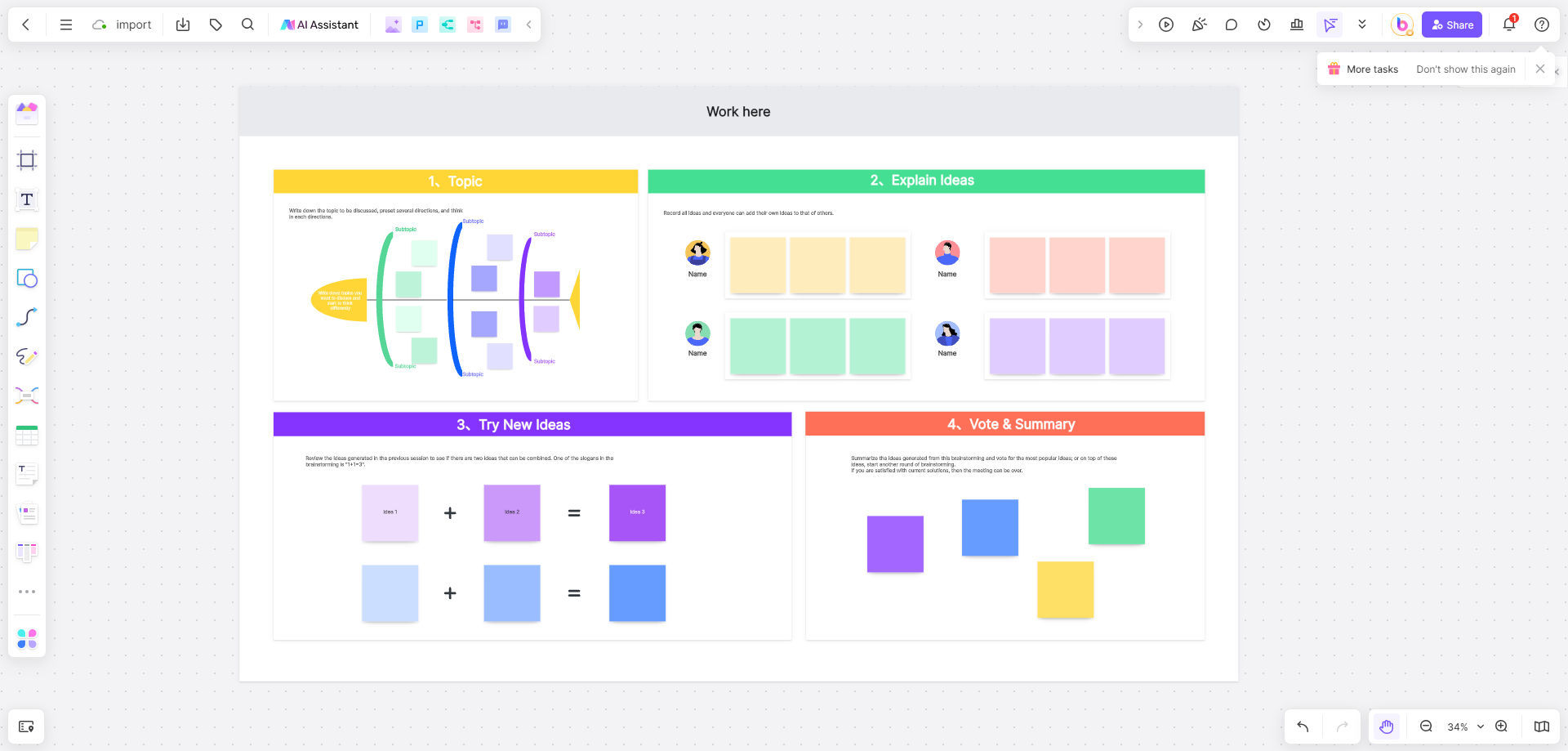
4. Invite Participants
Share the template with the participants of your guided brainstorming session. You can invite them via email or share a link to the template. Make sure everyone has access to the template and can contribute their ideas.
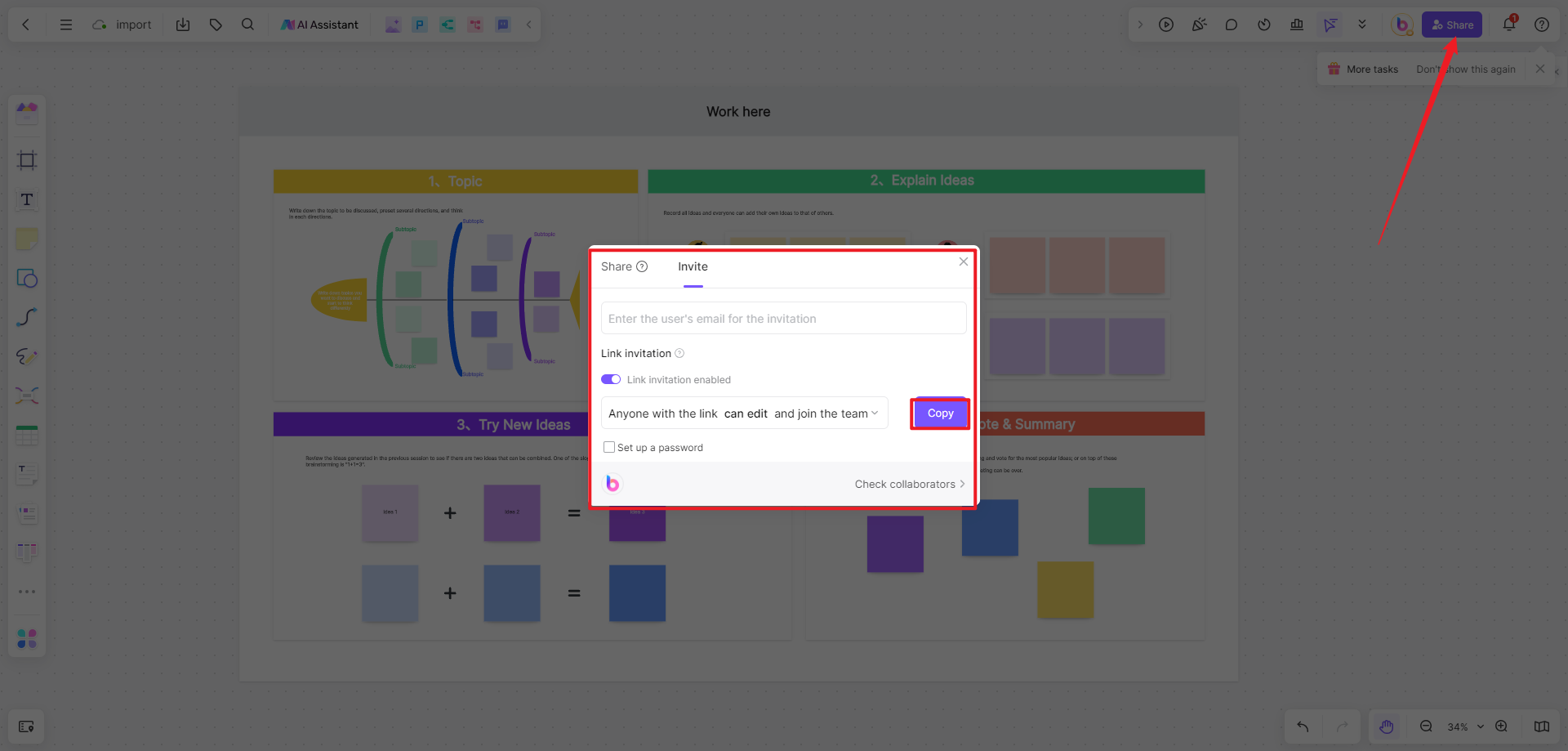
5. Conduct the Brainstorming Session
Start the brainstorming session by introducing the problem or topic to the participants. Explain the guidelines or prompts provided in the template and encourage everyone to contribute their ideas.
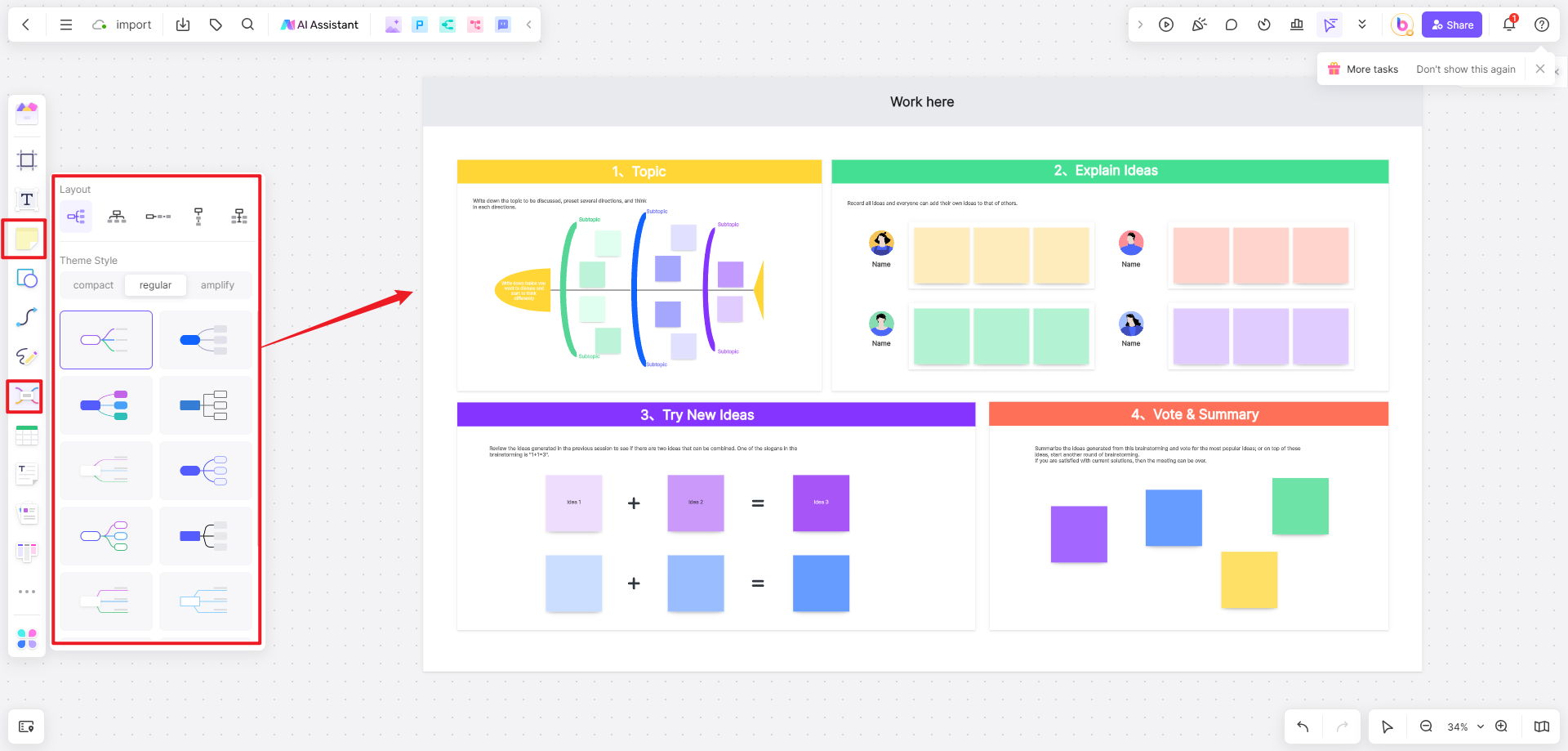
6. Document Ideas
As participants generate ideas, document them in the template. Boardmix provides tools for capturing and organizing ideas visually, such as sticky notes or mind maps. This allows everyone to see the ideas being generated in real-time and facilitates collaboration.
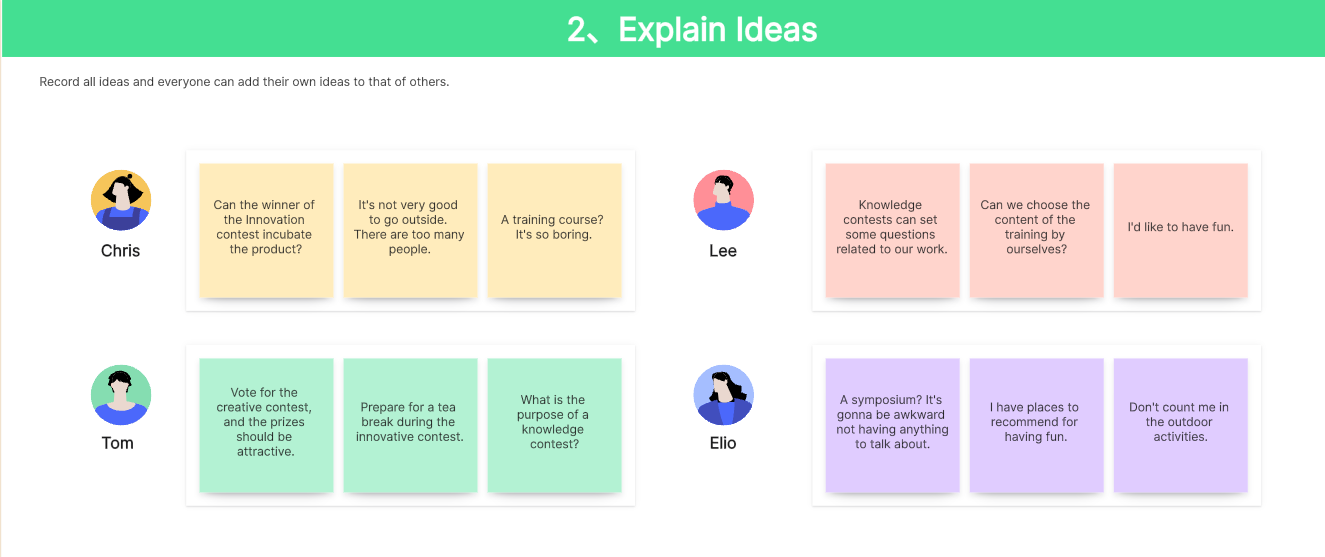
7. Facilitate Discussion
As the facilitator, it is important to guide the discussion and ensure that everyone has an opportunity to share their ideas. Encourage participants to build on each other's ideas and explore different perspectives.
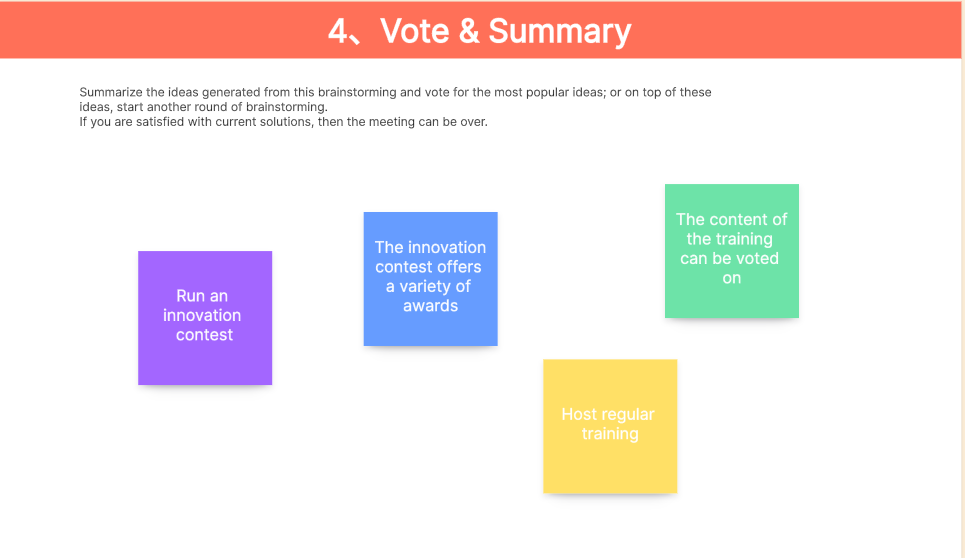
8. Analyze and Evaluate
After the brainstorming session, review the ideas generated and evaluate their feasibility and potential. Identify the most promising ideas that can be further developed or implemented.
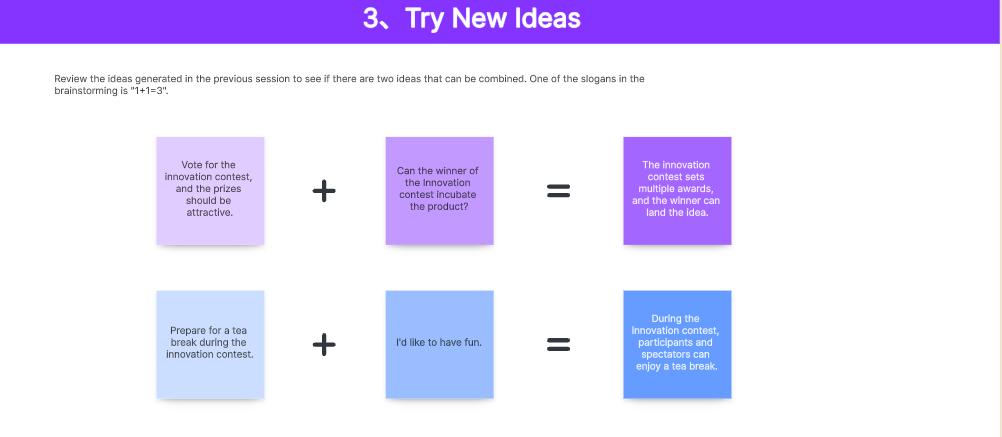
9. Take Action
Use the ideas generated in the guided brainstorming session as a basis for decision-making or problem-solving. Develop action plans or strategies based on the identified ideas and assign responsibilities for implementation.
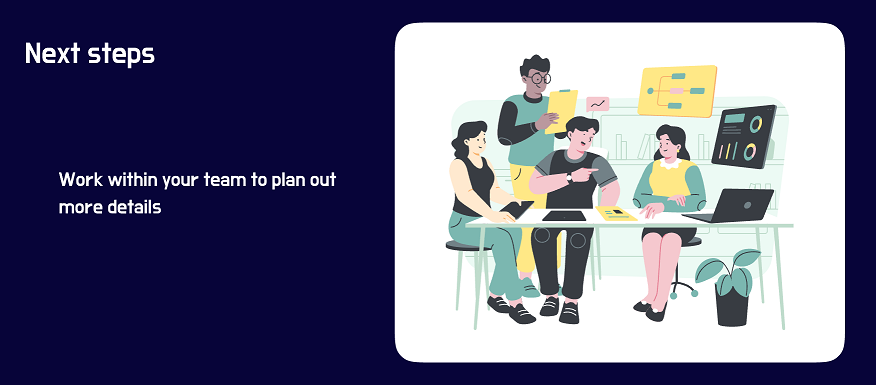
10. Follow-up
Monitor the progress of the action plans and provide support or guidance as needed. Regularly review and assess the outcomes of the brainstorming session to measure its effectiveness and identify areas for improvement.

By utilizing the Boardmix guided brainstorming template, you can create a supportive and inclusive environment where everyone feels comfortable sharing their ideas. The templates and tools provided by Boardmix can help streamline the brainstorming process and ensure that valuable insights are captured and utilized effectively.
The Benefits of Using a Guided Brainstorming Template
Using a guided brainstorming template can provide several benefits.
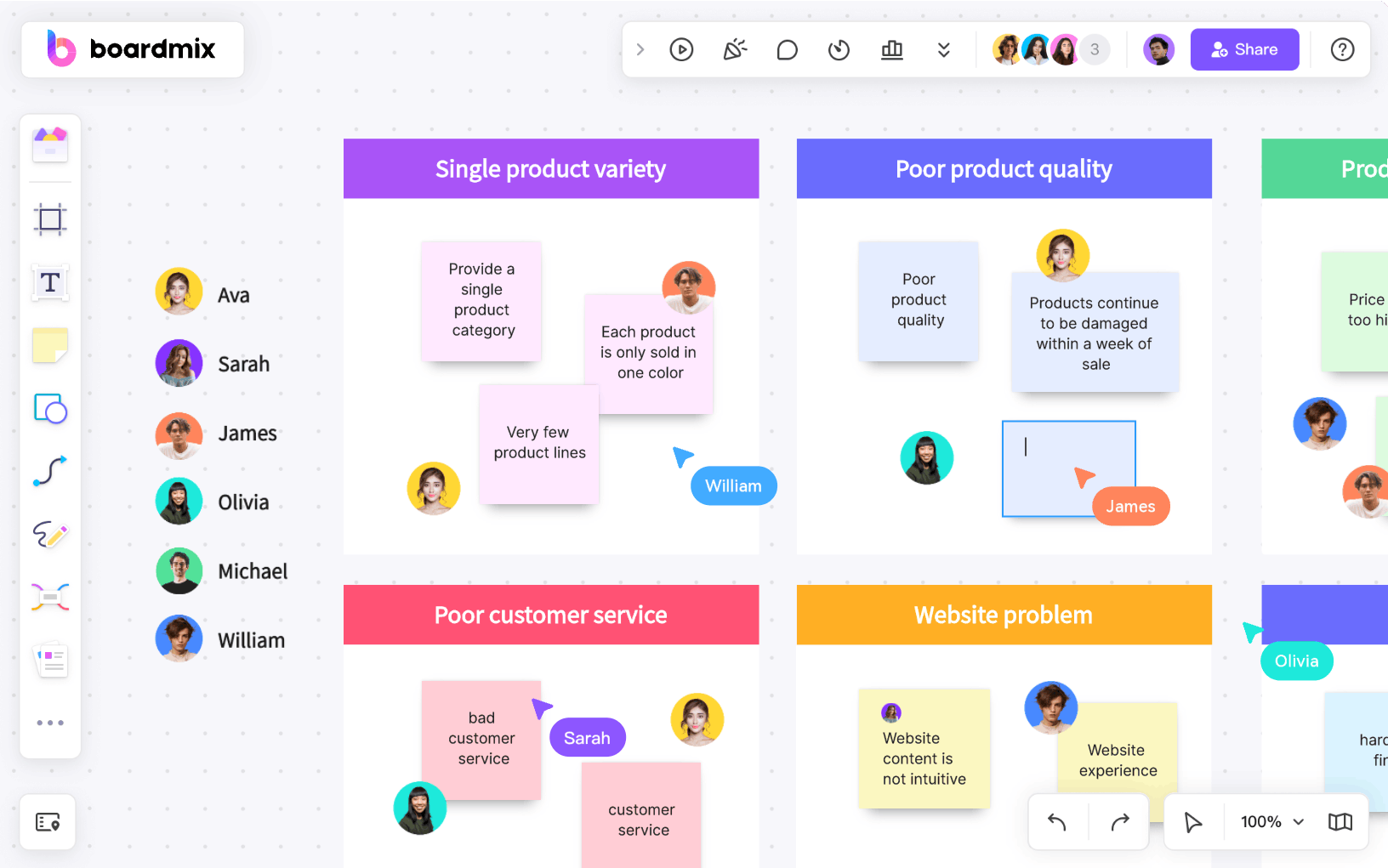
- Structure and Focus: A guided brainstorming template provides a structured framework for the brainstorming process. It helps participants stay focused on the topic or problem at hand, ensuring that ideas generated are relevant and aligned with the desired outcomes.
- Efficiency: Templates can save time and make the brainstorming process more efficient. They provide prompts and guidelines that prompt participants to think about different aspects or dimensions of the topic. This can help spark ideas more quickly and prevent participants from getting stuck or going off on tangents.
- Equal Participation: Templates can help ensure that all participants have an equal opportunity to contribute their ideas. By providing specific sections or spaces for each participant to fill in their thoughts, templates reduce the dominance of vocal or assertive individuals and encourage quieter or introverted participants to contribute their ideas as well.
- Collaboration and Teamwork: Guided templates facilitate collaboration and teamwork during brainstorming sessions. They allow participants to build upon each other's ideas, explore different perspectives, and collectively create innovative solutions. Templates also make it easier for participants to see and understand each other's ideas, fostering a sense of camaraderie and shared ownership.
- Documentation: Using a guided template helps capture and document the ideas generated during the brainstorming session. This documentation serves as a valuable resource for future reference, ensuring that no ideas are lost or forgotten. It also allows for further analysis, evaluation, and refinement of the ideas after the session.
Overall, using a guided brainstorming template can enhance the effectiveness and productivity of brainstorming sessions. It helps streamline the process, promotes inclusivity and collaboration, and ensures that the ideas generated are focused and relevant to the desired outcomes.
FAQ for Brainstorming
What is the purpose of brainstorming?
The purpose of brainstorming is to generate a large number of creative ideas and solutions to a specific problem or topic. It is a collaborative process that encourages participants to think outside the box and explore different perspectives. The main goal of brainstorming is to foster innovation, facilitate decision-making, and promote teamwork. By brainstorming, individuals can tap into their collective knowledge and experiences to come up with new and innovative ideas that can lead to positive outcomes.
What are the 4 steps of brainstorming?
The 4 steps of brainstorming are:
Preparation: Before the actual brainstorming session, it is important to define the problem or topic that needs to be addressed. This includes gathering relevant information, setting clear objectives, and selecting the participants.
Idea Generation: During this step, participants are encouraged to generate as many ideas as possible without any judgment or evaluation. The focus is on quantity rather than quality. Various techniques such as mind mapping, word association, and free writing can be used to stimulate creative thinking.
Idea Evaluation: Once a sufficient number of ideas have been generated, they are evaluated based on their feasibility, relevance, and potential impact. This step involves analyzing each idea and determining its value in solving the problem or achieving the desired outcome.
Idea Implementation: The final step is to select the most promising ideas and develop an action plan for their implementation. This includes assigning responsibilities, setting deadlines, and creating a timeline for execution. Regular monitoring and evaluation are also important to ensure the successful implementation of the chosen ideas.
By following these steps, brainstorming sessions can be structured and focused, leading to more effective problem-solving and decision-making.
Is brainstorming good or bad?
Brainstorming can be both good and bad, depending on how it is conducted and the specific circumstances. On one hand, brainstorming can be an effective way to generate a large number of creative ideas and solutions, promote collaboration, and encourage innovative thinking. It allows participants to freely share their thoughts, explore different perspectives, and build upon each other's ideas.
On the other hand, brainstorming sessions can sometimes be unproductive or ineffective. If not properly facilitated, they may lead to dominant voices or groupthink, where individuals feel pressured to conform to the majority opinion. This can stifle creativity and result in a limited range of ideas. Additionally, if there is no follow-up or action plan after a brainstorming session, the ideas generated may never be implemented or put into action.








